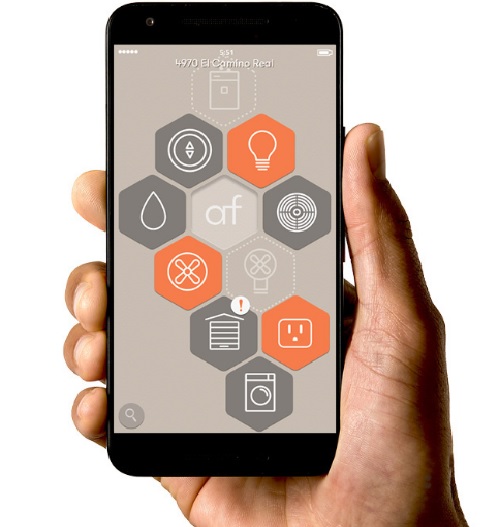Afero raises $20.3M in Series A funding for its IoT platform


Virtually all the major players in the tech world are looking to cash in on the burgeoning Internet of Things (IoT) market. Yet a quick survey of the current IoT offerings out there reveals a few persistent problems, like security concerns and a lack standards.
The company Afero, formed by Joe Britt (whose previous company Danger created the T-Mobile Sidekick) and Shin Matsumura, is aiming to unleash the potential IoT with a platform that directly takes on those challenges. Afero launched its platform and cloud services -- along with some key partnerships -- back in December. On Wednesday, the company is announcing it has $20.3 million in Series A funding that will help it move from R&D into its growth and business development phase.
Samsung Catalyst Fund is leading the investment, and they're joined by Presidio Ventures, Sanshin Electronics, SoftBank, Fenox Venture Capital, Assembly Fund and Robert Dobkin.
By offering an end-to-end platform -- "a hermetically sealed secure connection, from a hardware device all the way up to the cloud," as Britt put it -- Afero aims to help small and large businesses alike tap into the potential of IoT. And the potential is clearly there: According to one projection, nearly $6 trillion will be spent on IoT solutions over the next five years.
After its founding in 2014, Afero operated in "deep stealth mode" for about a year and a half, Britt told ZDNet. They worked on building a team capable of "tackling some essentially fundamental new approaches to how these devices are built and deployed."
With nearly 60 patents under its belt now, Afero is offering a full software stack that encompasses embedded devices, mobile apps and cloud infrastructure. Any device can gain access to Afero's globally distributed cloud with the company's Bluetooth Low Energy connectivity module, manufactured by the Japanese firm Murata. The platform, unlike many IoT offerings, works with any hardware or software.
"As much as we would love everyone to use our tech, we also realize there will be other ecosystems," Britt said.
A consumer, for instance, could use the Afero platform to interact with his Nest thermostat - through the Afero app, the Afero cloud would connect with the Nest cloud, rather than a hub device. The platform, Britt said, "makes it possible to bring together and bridge disparate IoT ecosystems."
Meanwhile, with a development tool called the Afero Platform Editor (APE), a developer can choose to use the interface generated by Afero, or they can build their own apps.
The Afero platform, Britt argues, overcomes one of the flaws of the existing IoT landscape: the presumption of greenfield development. With a module and platform that can work with any legacy design, Afero opens up its market to just about any existing manufacturer.
While Afero technology has yet to hit the market, the company's first partnerships illustrate the wide range of its potential applications. For instance, the game and toymaker Bandai Namco is using the Afero platform to connect products to the cloud securely through a parents' smartphone, so that new content can be downloaded onto a toy or game. The partnership should add a whole new revenue channel for the entertainment company. On the other end of the spectrum, the healthcare IT company Infocom is partnering with Afero to add IoT connectivity to devices like oxygen generators and blood glucose meters. By securely connecting the device through the patients' smartphone, healthcare practitioners don't have to worry about the wifi structure in the patients' home.
Meanwhile, Afero promises to keep the whole platform secure with layers of security. IoT security, Britt said, can be "deceptively complicated -- you can inadvertently leave vulnerabilities that are really basic."
Afero incorporates best practices from the world of computer security, including session keys with limited lifetime, Britt explained, all implemented so the developer doesn't have to worry about it. On top of that, the platform adds some IoT specific security. For instance, the system makes it difficult to characterize traffic patterns, so that hackers can't detect vulnerabilities in routine mechanical functions like a door locking.